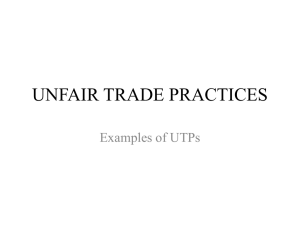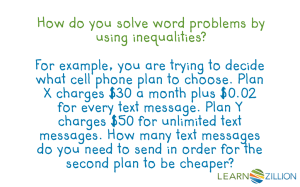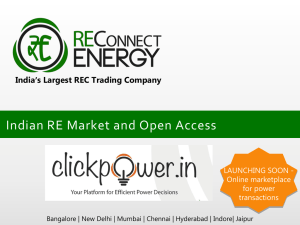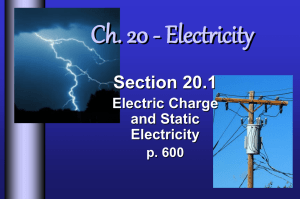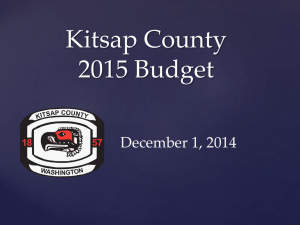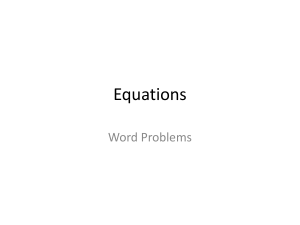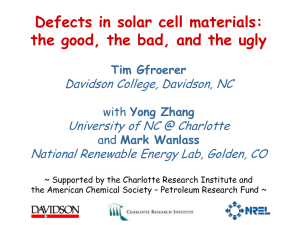Open Access Charges
advertisement
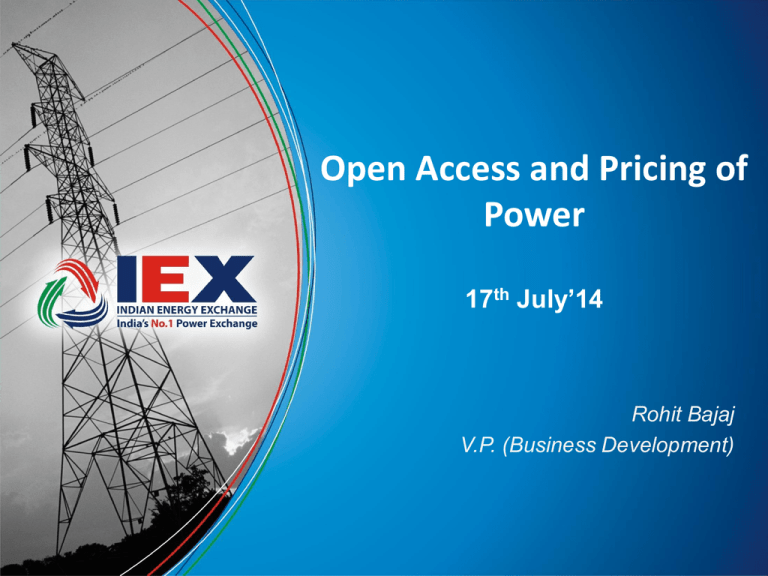
Open Access and Pricing of Power 17th July’14 Rohit Bajaj V.P. (Business Development) In this presentation Introduction to Indian Power Market Open Access Current Scenario Trading through IEX Cost Economics for Industries Barriers and Enablers for Open Access Indian Power Market: Present Status Long Term Upto 25 Years Medium Term Power Purchase Agreements 89% OTC Licensed traders (61) 6% 3 months- 3years OTC Intraday- 3 months Short-Term Intraday - 3 months Balancing Market Real Time Exchanges 1. Intra-day 2. DAM 3. DAC 4. Daily 5. Weekly Unscheduled Interchange 3% 2% Growth Trend of Short Term Power Markets 10.9% 100 8.8% Volume (BU) 9.3% 10% 7.8% 80 60 9.1% 12% 8% 5.4% 6% 40 4% 20 2% 0 0% FY 08-09 FY 09-10 Bilateral Source: Monthly MMC Reports FY 10-11 PXs FY 11-12 UI FY 12-13 FY 13-14 Share of ST Vol in Tot Gen Share of Short Term Volumes Traded in Total Power Generation (%) 120 Open Access: Current Scenario Status of Open Access • Electricity Act, 2003 envisages States to implement open access for 1MW+ customers by Jan, 2009 • IEX pioneered operationalisation of retail open access, first transaction was in August, 2009 • Several operational and regulatory impediments have led consumers to choose partial open access and not full open access • Consumer maintains its supply agreement with local distribution company and leverages market for economical and contingency power. State wise Status of OA Consumers FY13-14 No Open Access Consumers Uttar Pradesh Generators Uttar Pradesh Jammu & Kashmir Delhi Delhi Jharkhand Bihar Tamil Nadu Goa Kerala Jharkhand Union Territories Sikkim Bihar DVC NE States (except Meghalaya & Arunachal Pradesh) Chattisgarh West Bengal Union Territories (except Daman & Diu) NE States (except Assam, Meghalaya & Arunachal Pradesh) Share of OA Consumer in Total Purchase 2.80 Participation Increasing Participation Industrial Segment Participating at IEX Miscellaneous 7% Paper 3% Housing & Commercial Complex 1% Cement 4% Textile 33% Food 5% Home Product 5% Auto Components 9% Chemical 11% As on 30th June’14 Metal 22% Trade through IEX Company Snapshot 95% Market Share ~80,000MWh average daily trade 3000+ Participants 2100+ Industries Transparency Liquidity Competition IEX Market Segments Delivery-based Contracts Day-Ahead Market since June,08 Term-Ahead Market since Sep,09 Closed , Double-sided Auction 10-12 am bidding Each 15-min block , 0.1 MW min NOC required Day-Ahead Contingency – Another window 3-5pm Intra-Day - for the same day starting 2 pm Daily- for rolling seven days (delivery starting after 4 days) Weekly- for 1 week (Monday-Sunday) Renewable Energy Certificates since Feb,11 Green Attributes as Certificates Sellers : RE generators not under feed in tariffs Buyers: Obligated entities 1MWh equivalent to 1 REC Next… Energy Saving Certificates Auction Continuous Features of Day Ahead Market A closed double-sided anonymous auction for each 15-min time block for the following day N1 The intersection between the aggregated sale and purchase curves defines the market clearing price (MCP) N3 A2 N2 N2 E1 W1 W3 12 Bid area defined Congestion Management through market splitting and determining Area Clearing Price (ACP) specific to an area W2 E2 S1 S2 Bid types: Portfolio Orders or Block Orders Minimum bid=Re.1 for 0.1MWh Minimum Price & Volume Step = 0.1p * 0.1 MWh 12 Bid Areas A1 DAM Trading Process Bidding Matching Review corridor and funds availability 10:00 am to 12:00 pm 12:00 pm to 1:00 pm 1:00 pm to 2:00 pm Bids for 15- min each or block bids can be placed MCP &MCV calculate d Corridor availabilit y and funds verified Result Confirmation Scheduling 3:00 pm 5:30 pm 6:00 pm Final ACV and ACP calculated. Market splitting if congestion Collective transaction confirmatio n by NLDC Final Schedule sent to RLDC for incorporatio n Prices in the Day-Ahead Market at IEX • Diverse participation led to high liquidity and most competitive prices • Prices smoothened gradually depicting the true market scenario • DAM prices emerged as the benchmark price for a short term trading Cleared Volume vs. MCP at IEX 35,000 6.81 25,000 7.00 6.00 5.19 MWh 5.00 20,000 3.56 3.54 4.00 3.49 15,000 2.80 10,000 2.00 5,000 0 3.00 1.00 766 6,171 11,801 13,799 22,375 28,925 2008-09 2009-10 2010-11 2011-12 2012-13 2013-14 Cleared Volume (MWh) MCP (INR/MWh) 0.00 INR/MWh 30,000 8.00 Cost Economics for Industries Open Access Charges: What a consumer pays PoC charges • Inter-State Transmission charges payable by the open access consumer Transmission Charges or STU Charges • Payable to the state transmission utility for the use of the transmission system for availing power through open access. Wheeling charges • Charge to the Discom for conveyance of electricity through open access as determined by the SERCs Cross Subsidy Surcharge • Subsidising open access consumer has to pay a cross subsidy surcharge to the Discom. Others • Additional Charges, if any • NLDC application fee, scheduling and operating charges, SLDC Charges • IEX transaction charges/Trading Margin Open Access: What a consumer pays Losses • An open access consumer has to bear in kind the following losses as defined by the relevant regulations Point of connection (PoC) loss • Inter-State transmission system loss Transmission loss or state loss • Consumer to absorb apportioned energy losses in the transmission system as per the relevant regulations Wheeling loss • Technical losses in the distribution system determined at various voltage level by the state commissions. Case : Gujarat Landed Cost for Open Access Consumer Calculation of Landed Cost at IEX for Consumers in Gujarat Voltage Level 66 kV Total Volume in MWh (at Regional Periphery) 240 IEX Rate at Regional Periphery (in INR per unit)** 2.52 Losses Gujarat Withdrawal POC Loss 1.92% State Loss 4.81% Wheeling Losses 0.00% Cost After Losses (in INR per unit) 2.68 Charges State Transmission Charges (in Rs/unit ) 0.12 Gujarat Withdrawal POC Charges (in Rs/unit) 0.12 Wheeling Charges (in Rs/unit)# 0.00 NLDC Operating Charges+ NLDC Application Charges + SLDC Charges* 0.01 IEX Transaction Charges @ Rs 20 per MW (in INR/unit) 0.02 Professional Fees ( If transacted through Member)* * 0.02 Additional Surcharge (in INR/unit) 0.42 Cross Subsidy Charges (in INR/unit) 0.39 IEX Rate @ ex ABT Meter (in INR/unit) 3.76 *Assumption: Buy Quantity is 10 MW for 24 hours and 1000 Portfolios are selected everyday **IEX W2 Avg Price FY 13-14 Case : Gujarat Cost Benefit Analysis- Retail vs. Open Access Industrial Consumer (Connected Load: 66kV) Retail Consumer Open Access Consumer Retail Tariff: INR 5.75/unit Landed Cost: INR 3.76/unit Cost Effective Measure for Power Supply is Open Access, offering savings of INR 1.99/unit Open Access Charges Losses and Charges in select States at 33 kV level PoC Charge (INR/kW h) PoC Loss (%) STU Charge (INR/ kWh) STU Loss (%) Wheeling Charge (INR/ kWh) Wheeling Loss (%) Cross Subsidy Surcharge Punjab (33 kV) 0.16 1.75% 0.27 2.5% 1.19 2.26% 1.07 Uttar Pradesh (33 kV) 0.16 1.75% 0.03 3.67% 0.082 7.00% - 2.02 0.13 Haryana* (33 kV) 0.16 1.75% 0.29 2.5% 0.74 Included in wheeling charges Rajasthan (33kV ) 0.16 1.75% 0.37 4.2% 0.11 3.8% * Additional Surcharge in case of Haryana is Rs 0.50/unit Landed Cost to Consumer Accessing DAM at IEX (33 kV, 1 MW, RTC) Assumptions: - Consumer connected at 33kV level - Consumer load = 1 MW - Average Price at which procured from IEX = Rs 2.5/kWh for all - Calculating landed cost after adding POC, STU & Wheeling Charges & losses, NLDC operating & application charges, SLDC charges, IEX transaction charges Punjab (33 kV) Landed Cost to Consumer (INR/ kWh) 5.49 State Energy Charge (INR/kWh) 6.33 Uttar Pradesh (33 kV) 3.26 5.60 Haryana (33 kV) 6.36 6.94 Rajasthan(33kV ) 3.67 5.50 Average Area Prices in DAM at IEX (Apr’13-Mar’14) Area DAM Prices (RTC) 6 N1 N3 5 A2 E1 W1 W3 E2 W2 A1 4.73 4 N2 INR/kWh N2 5.58 3.11 3 2.44 2.44 2.42 2.42 2.55 2.55 2 S1 1 S2 0 Region 12 Bid Areas 2.80 2.52 2.52 2.25 Cost saving for Industries Procuring Power through IEX Case study of some industrial units shows the monthly cost saving as a result of procuring power from IEX instead of resorting to costly power from DG sets or Discom Industry Analysis (FY 2011-12) Textiles Auto Component Manufacturer Pharmaceuticals Chemicals Paper Industries State Punjab Haryana Gujarat Punjab Punjab Load Requirement 5-6 MW 12 MW 4 - 5MW 27MW 25MW Power cost as a percentage of total cost 10% High 2% 60% 10.2% % consumption procured from IEX 73% 67% 80% 51% 4% Monthly saving (INR) 69.4 lakh 89 Lakhs 8.25 lakh 1.5 Crore 10 lakh Barriers to Open Access Barriers to Open Access Prohibitive Open Access Charges • High Cross subsidy surcharge • High wheeling charges • Additional surcharge Legislative Impediments • Gross misuse of certain statutes in the EA 2003 (Section 11, Section 37, Section 108, etc.) Operational Hurdles • Unwilling /Incapable SLDC • Procedural Bottlenecks • Physical infrastructural constraints States allowing open access • Haryana: High CSS and additional surcharge of 50 p/unit • Punjab: High CSS and high wheeling charges (same for all voltage) • Gujarat Charges applicable on the reserved quantum (OA requested) & additional surcharge of 42p/unit • Rajasthan- No issue • Tamil Nadu: OA not allowed to Sellers, Sec-11 invoked Restrictive Open Access • High Open Access charges: • Chhattisgarh, Orissa, Assam – High CSS • Meghalaya: OA charges for full day on highest quantum in a time block, • Approvals and additional requirements: • Maharashtra: Power through Exchange permissible only on week ahead basis or higher and not on Day-Ahead basis. • Himachal : Requires exact schedule a day in advance for purchase through Discom • MP: Approval from Discom • Karnataka: Imposed Sec 11 briefly. Consumers OA is possible. • Infrastructure Constraints: • Tripura, Mizoram, Manipur, Nagaland, J&K States not allowing open access • SLDC Hindrance • Uttar Pradesh, Bihar, Jharkhand Approvals not given • Absence of adequate regulatory framework • Sikkim: Regulatory inadequacy • Open Access made unviable through high charges • West Bengal: High CSS and flat tariff • Jharkhand: High CSS • Delhi: Either Discom or OA General Issues and resolution •Financial Settlement –Delay in Energy Credits (Haryana ) –UI Settlement – – No credits for under drawals • NoC for longer periods (3-6m) • Same NoC applicable for intra-day transactions –Procedures to be issued by NLDC Thank You for your attention www.iexindia.com Best Power Exchange in India – Enertia Awards ‘13 Best Performing Power Exchange – Power Line Awards ’13 & ‘12 Best E-enabled consumer platform – India Power Awards ‘09 Open Access Registry Framework Proposal for implementation • This will bring in transparency and facilitate faster transactions using automatic rule-based open access clearance while removing manual discretions • Integrated IT based system • All OA approvals automated • Function as an interacting medium between the OA Participants, Trade Intermediaries/PXs and National/Regional and State LDCs. • Record of Information will be available to CERC, System Operators, OA Customers, Traders and PXs Stakeholders OA Applicants Financial Institutions (in future) LDCs Regulators OAR • Store information of all OA granted • Info on inter-state corridor available for STOA as uploaded by NLDC/RLDC • Info on availed STOA corridor Proposed amendment in the Electricity Act, 2003 Separation of Carriage & Content • Broad Principles – Distribution and Supply shall be recognized as separate licensed activity – Distribution Licensee: To be responsible for development, operation and maintenance of distribution network business and shall have an obligation to provide connection on demand to any consumer in its area of distribution – Supply Licensee: Clear unbundling from existing distribution licensee • Responsible for arranging supply of electricity to all consumers in the area of supply. The areas of supply for the incumbent supply licensee to be the same as area of distribution for the distribution licensee – Competition among suppliers for eligible customers (1MW+) • We need to deal with India-specific issues – Cross subsidy elimination Roadmap – T&D Loss Treatment (Supplier Vs Distributor) – Exempt small utilities from Unbundling

